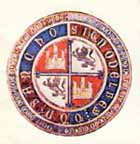|
Constance Of Peñafiel
Constanza Manuel of Villena (ca. 1316 – 13 January 1349), was a Castilian noblewoman who by her two marriages was Queen consort of Castile and Infanta of Portugal. Early years and first marriage: Queen of Castile Born in Castillo de Garcimuñoz, she was the daughter of Castilian nobleman and writer Don Juan Manuel (1282–1348), Duke of Peñafiel, "powerful and hardworking magnate of Castile"''Nobreza de Portugal'', vol. I, p. 207. and his second wife, Infanta Constanza of Aragon, daughter of King James II of Aragon. She was the only surviving child of her parents' marriage: her two full siblings, Beatriz and Manuel, both died young; in addition, Constanza had several half-siblings from her father's third marriage and several extramarital affairs, including Juana Manuel (later wife of King Henry II of Castile). Constanza's exact date of birth is unknown, but must be around 1316, because of the circumstances when her father negotiated her first betrothal. After the death of ... [...More Info...] [...Related Items...] OR: [Wikipedia] [Google] [Baidu] |
National Library Of Portugal
The (Portuguese language, Portuguese for ''National Library of Portugal'') is the Portugal, Portuguese national library, fulfilling the function of Legal deposit, legal deposit and copyright. History The library was created by Decree of 29 February 1796, under the name of Royal Public Library of the Court ( pt, Real Biblioteca Pública da Corte). The library's objective was to allow the general public access to the court's collections, thus bucking the trend of the time only available to scholars and sages could access the treasures, manuscripts, paintings, and books of the royal court. In the dawn of the victory of the Liberals following the Portuguese Civil War and the abolition of the religious orders (1834), the institution was renamed the National Library of Lisbon and was officially entrusted with all or part of the libraries of numerous monasteries and convents. The arrival of these large collections made it absolutely necessary to move to larger premises, and the choic ... [...More Info...] [...Related Items...] OR: [Wikipedia] [Google] [Baidu] |
Ferdinand IV Of Castile
Ferdinand IV of Castile (6 December 1285 – 7 September 1312) called the Summoned (''el Emplazado''), was King of Castile and León from 1295 until his death. His upbringing and the custody of his person were entrusted to his mother, Queen María de Molina, while his tutorship was entrusted to his granduncle Henry of Castile the Senator. At that time, and also for the rest of his reign, his mother tried to placate the nobility, confronted her son's enemies, and repeatedly prevented Ferdinand IV from being dethroned. He faced the insubordination of the nobility, led at numerous times by his uncle John of Castile, Lord of Valencia de Campos, and by Juan Núñez II de Lara, who were supported in some occasions by another royal relative, Juan Manuel, Prince of Villena. Like his predecessors on the throne, Ferdinand IV continued the Reconquista and, although he failed to conquer Algeciras in 1309, he captured the city of Gibraltar that same year, and in 1312 the city of Alcaudete wa ... [...More Info...] [...Related Items...] OR: [Wikipedia] [Google] [Baidu] |
Las Arras
, or (English: arrhae, wedding tokens, or unity coins''Hispanic Wedding Traditions'' , worldlyweddings.com) are used in Christian wedding ceremonies in , n countries, and the |
Inês De Castro
Inês de Castro (; in Castilian: Inés; 1325 – 7 January 1355) was a Galician noblewoman and courtier, best known as lover and posthumously-recognized wife of King Peter I of Portugal. The dramatic circumstances of her relationship with Peter (at the time Prince of Portugal), which was forbidden by his father King Afonso IV, her murder at the orders of Afonso, Peter's bloody revenge on her killers, and the legend of the coronation of her exhumed corpse by Peter, have made Inês de Castro a frequent subject of art, music, and drama through the ages. Biography Inês was the natural daughter of Pedro Fernández de Castro, Lord of Lemos and Sarria, and his noble Portuguese mistress Aldonça Lourenço de Valadares. Her family descended both from the Galician and Portuguese nobilities. She was also well connected to the Castilian royal family, by illegitimate descent. Her stepmother was Infanta Beatrix of Portugal, the youngest daughter of Afonso of Portugal, Lord of Portalegre and V ... [...More Info...] [...Related Items...] OR: [Wikipedia] [Google] [Baidu] |
Battle Of Río Salado
The Battle of Río Salado also known as the Battle of Tarifa (30 October 1340) was a battle of the armies of King Afonso IV of Portugal and King Alfonso XI of Castile against those of Sultan Abu al-Hasan 'Ali of the Marinid dynasty and Yusuf I of Kingdom of Granada, Granada. Campaign After Alfonso XI of Castile's victory in the Battle of Teba, Teba campaign of 1330, Muhammed IV, Sultan of Granada sent to Abu al-Hasan 'Ali for help in maintaining his survival. The policies of the Kingdom of Fez vis-à-avis the Iberian Peninsula had changed upon the ascension to power of Hasan in 1331. During his rule the Marinids achieved their largest territorial expansion in Africa. Hasan sent a naval fleet and 5,000 troops that landed at Algeciras in early 1333. These set about helping the Granadan King to capture the Castilian Outpost (military), outpost of Gibraltar, which he did after less than two months. They then conducted a limited campaign to reunite these territories to the realm of K ... [...More Info...] [...Related Items...] OR: [Wikipedia] [Google] [Baidu] |
Dobla
The dobla (plural: doblas), including ''dobla castellana'' (''excelente''), ''gran dobla'', ''dobla de la Banda'', ''dobla cruzada'', ''dobla alfonsi'' and ''dobla almohade'', was the name of various Iberian gold coins between the 11th and 16th centuries, ranging in value from 2-870 maravedis, depending on the year. The name originated as the "double maravedi" (hence ''"dobla"''), a term used by Castilians for the Muslim dinar, when the maravedí was re-valued as equivalent to the Muslim half-dinar, or masmudina, by Ferdinand III. However, years later, the ''dobla'' became various new coins, and at times, a ''dobla'' was the same as the newer coins ''enrique'' or ''castellano'' (but the ''dobla castellana'' became double their value in 1475). In general, a ''dobla'' was a valuable gold coin, while the ''maravedi'' was de-valued into silver (c. 1258) or rarely copper forms. In the 16th century, the dobla was replaced by the ducado, then by the escudo (in 1537) as the standard ... [...More Info...] [...Related Items...] OR: [Wikipedia] [Google] [Baidu] |
Seville
Seville (; es, Sevilla, ) is the capital and largest city of the Spanish autonomous community of Andalusia and the province of Seville. It is situated on the lower reaches of the River Guadalquivir, in the southwest of the Iberian Peninsula. Seville has a municipal population of about 685,000 , and a metropolitan population of about 1.5 million, making it the largest city in Andalusia, the fourth-largest city in Spain and the 26th most populous municipality in the European Union. Its old town, with an area of , contains three UNESCO World Heritage Sites: the Alcázar palace complex, the Cathedral and the General Archive of the Indies. The Seville harbour, located about from the Atlantic Ocean, is the only river port in Spain. The capital of Andalusia features hot temperatures in the summer, with daily maximums routinely above in July and August. Seville was founded as the Roman city of . Known as ''Ishbiliyah'' after the Islamic conquest in 711, Seville became ... [...More Info...] [...Related Items...] OR: [Wikipedia] [Google] [Baidu] |
Pope Benedict XII
Pope Benedict XII ( la, Benedictus XII, french: Benoît XII; 1285 – 25 April 1342), born Jacques Fournier, was head of the Catholic Church from 30 December 1334 to his death in April 1342. He was the third Avignon pope. Benedict was a careful pope who reformed monastic orders and opposed nepotism. Unable to remove his capital to Rome or Bologna, he started the great palace at Avignon. He decided against a notion of Pope John XXII by saying that souls may attain the "fulness of the beatific vision" before the Last Judgment. Whilst being a stalwart reformer, he attempted unsuccessfully to reunite the Eastern Orthodox and Catholic Churches, almost three centuries after the Great Schism; he also failed to come to an understanding with Emperor Louis IV. Early life Little is known of the origins of Jacques Fournier. He is believed to have been born in Canté in the County of Foix around the 1280s to a family of modest means. He became a CistercianJonathan Sumption, ''Trial by Batt ... [...More Info...] [...Related Items...] OR: [Wikipedia] [Google] [Baidu] |
Peter III Of Aragon
Peter III of Aragon ( November 1285) was King of Aragon, King of Valencia (as ), and Count of Barcelona (as ) from 1276 to his death. At the invitation of some rebels, he conquered the Kingdom of Sicily and became King of Sicily in 1282, pressing the claim of his wife, Constance II of Sicily, uniting the kingdom to the crown. Youth and succession Peter was the eldest son of James I of Aragon and his second wife Violant of Hungary. Among opportunistic betrothals of his youth, he was betrothed to Eudoxia Laskarina, the youngest daughter of Theodoros II Laskaris, in or before 1260 (''claim not substantiated''). This contract was dissolved, however, after Eudoxia's brother lost the imperial throne in 1261, and Eudoxia was instead married to the Count of Tenda. On 13 June 1262, Peter married Constance II of Sicily, daughter and heiress of Manfred of Sicily. During his youth and early adulthood, Peter gained a great deal of military experience in his father's wars of the ''Reconq ... [...More Info...] [...Related Items...] OR: [Wikipedia] [Google] [Baidu] |
Évora
Évora ( , ) is a city and a municipality in Portugal. It has 53,591 inhabitants (2021), in an area of 1307.08 km2. It is the historic capital of the Alentejo and serves as the seat of the Évora District. Due to its well-preserved old town centre, still partially enclosed by medieval walls, and many monuments dating from various historical periods, including a Roman Temple, Évora is a UNESCO World Heritage Site. Due to its inland position, Évora is one of Portugal's hottest cities in the summer, frequently subject to heat waves. Évora is ranked number two in the Portuguese most livable cities survey of living conditions published yearly by ''Expresso''. It was ranked first in a study concerning competitiveness of the 18 Portuguese district capitals, according to a 2006 study made by Minho University economics researchers. Along with Liepāja, Latvia, Évora was chosen to be European Capital of Culture in 2027. History Early history Évora has a history dating ... [...More Info...] [...Related Items...] OR: [Wikipedia] [Google] [Baidu] |
Afonso IV Of Portugal
Afonso IVEnglish: ''Alphonzo'' or ''Alphonse'', or ''Affonso'' (Archaic Portuguese), ''Alfonso'' or ''Alphonso'' (Portuguese-Galician) or ''Alphonsus'' (Latin). (; 8 February 129128 May 1357), called the Brave ( pt, o Bravo, links=no), was King of Portugal from 1325 until his death in 1357. He was the only legitimate son of King Denis of Portugal and Elizabeth of Aragon. Early life Afonso, born in Lisbon, was the rightful heir to the Portuguese throne. However, he was not Denis' favourite son, the old king preferring his illegitimate son, Afonso Sanches. The notorious rivalry between the half brothers led to civil war several times. On 7 January 1325, Afonso IV's father died and he became king, whereupon he exiled his rival, Afonso Sanches, to Castile, and stripped him of all the lands and fiefdom given by their father. From Castile, Afonso Sanches orchestrated a series of attempts to usurp the crown. After a few failed attempts at invasion, the brothers signed a peace trea ... [...More Info...] [...Related Items...] OR: [Wikipedia] [Google] [Baidu] |



_01.jpg)


